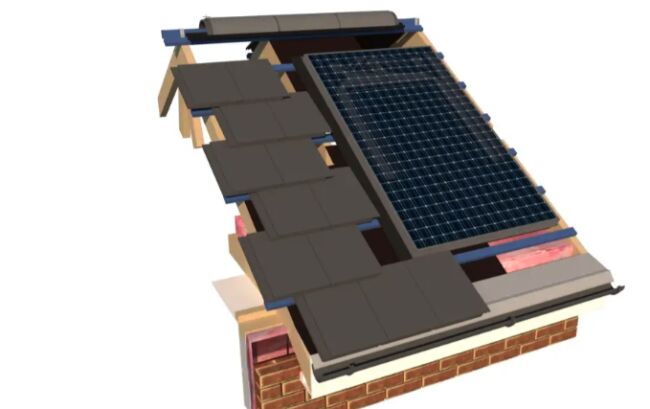Opening Times Mon-Fri 6:30am to 4:30pm
Opening Times Mon-Fri 6:30am to 4:30pm
A roof can do so much more than offer protection from the elements. The expanse of a roof provides one of the best locations to introduce solar technologies and take advantage of the benefits that integrated solar can bring.
With its new PV InDaX Adapt system, BMI Redland provides an in-roof PV system that is compatible with its concrete, clay and slate tiles and can achieve any desired configuration type in portrait and landscape formats, whilst boasting high output performance.
Based on proven crystalline technology, the PV InDaX Adapt in-roof photovoltaic system offers high output performance in an attractive and weathertight roof covering.
The panel sits in line with the surrounding tiles, creating an improved aesthetic and weathertight system. Not only can the PV system provide flexibility in format and module specification, but the modules can also be installed to the edge of the roof, allowing the greatest flexibility in design to meet the required aesthetics for your project.

Our in-roof PV systems have been rigorously tested to verify performance for UK projects in compliance with MCS 005 AND MCS 012 certification. The fixing system and the solar module have been tested together and conform to the UK specific regulation via a UK-specific fire performance test (BS EN 13501-5:2016 (BroofT4). BMI Redland in-roof systems demonstrate compliance to:
BS EN 14437:2004 – Determination of the uplift resistance of installed clay or concrete tiles for roofing – Roof system method.
BS 476-3:2004 – Fire tests on building materials and structures. Non-combustibility test for materials or BS EN 13501-5:2016 (BroofT4) – Fire classification of construction products and building elements. Classification using data from external fire exposure to roof tests.
PD CEN/TR 15601:2012 – Hygrothermal performance of buildings. Resistance to wind-driven rain of roof coverings with discontinuously laid small elements.
The PV Indax Adapt system utilises half-cut cell module technology. Half-cut cell modules provide improved performance and are even more reliable than traditional solar modules.
Overall cost efficiency is improved; with higher outputs per square metre of solar, installation times and component quantities can be reduced.
